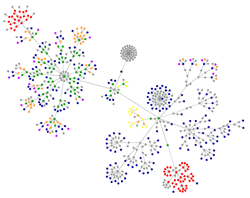Google Labs have launched an accessible search engine. Accessible in both the sense that the search engine interface is more accessible (I haven’t evaluated this to see whether its true or not) and in that it aims to return accessible sites in the results.
A read of the FAQ reveals that the only sort of accesibility being considered at this time is visual impairment. This is a bit of a shame because it will reinforce the erroneous view that accessibility = blind. I hope that in the future it can be extended and customised to return results tailored to particular requirements.
The number of results returned is much lower, sometimes only 5% of the number returned by the main search.
The main Google site: Results 1 – 10 of about 3,370,000 for steve pugh. And pages related to me rather than the comics artist, etc. are at numbers two, four and five.
Accessible Google: Results 1 – 10 of about 157,000 for steve pugh. And pages related to me rather than the comics artist, etc. are at numbers two, three, four and ten.
One little thing I’ve noticed is that Wikipedia pages must be highly accessible according to Google as they come near the top in any search.
The main Google site: Results 1 – 10 of about 526,000 for tanita tikaram. And my site comes in at number two.
Accessible Google: Results 1 – 10 of about 57,900 for tanita tikaram. And my site is now at number one. The site TanitaTikaram.com (which uses frames) moves down from one to three. So frames don’t exclude you from these results but may hurt your position. Amazon doesn’t fair well, slipping from number ten to number thirty five.
Google indexes Flash, Word and Acrobat as well as HTML but I haven’t seen any such results yet. These formats can be made accessible but presumably Google’s spiders aren’t yet able to parse them for the signs that the authors have done so.
As with most products aimed at providing an accessible service, there are benefits for all users. If you find that Google often returns too many search results, and if you don’t want to see any paid links, and if you want to get results that only include easy to read and navigate pages, then this could be the search engine for you.
Meanwhile, I’m interested to hear what others in the accessibility field think.

